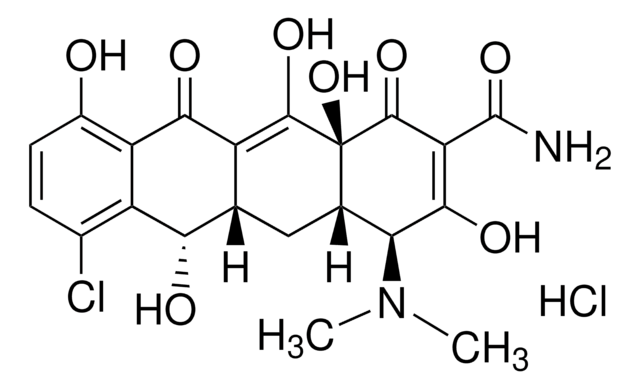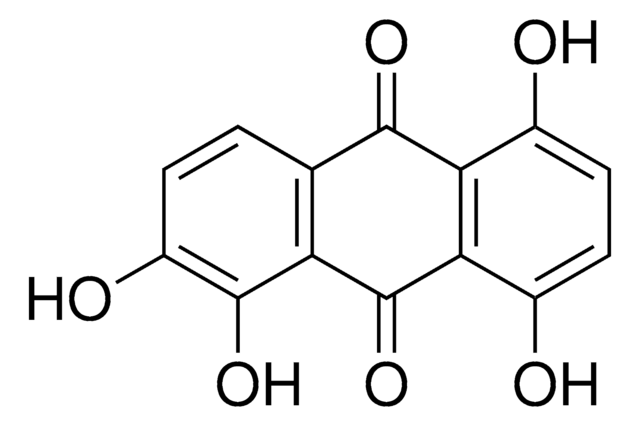A3882
Alizarin-3-methyliminodiacetic acid
≥98% (TLC), powder
Synonym(s):
N-(carboxymethyl)-N-[(9,10-dihydro-3,4-dihydroxy-9,10-dioxo-2-anthracenyl)methyl]-glycine, 3,4-Dihydroxyanthraquinon-2-yl-methylimino-diacetic acid, Alizarin Complexone, Alizarin Fluorine Blue
About This Item
Recommended Products
product name
Alizarin-3-methyliminodiacetic acid,
Assay
≥98% (TLC)
form
powder
solubility
1 M NaOH: 10 mg/mL, blue to purple
SMILES string
OC(=O)CN(CC(O)=O)Cc1cc2C(=O)c3ccccc3C(=O)c2c(O)c1O
InChI
1S/C19H15NO8/c21-13(22)7-20(8-14(23)24)6-9-5-12-15(19(28)16(9)25)18(27)11-4-2-1-3-10(11)17(12)26/h1-5,25,28H,6-8H2,(H,21,22)(H,23,24)
InChI key
PWIGYBONXWGOQE-UHFFFAOYSA-N
Looking for similar products? Visit Product Comparison Guide
General description
Application
- for live staining of mineralized bone matrix
- to double-label the bone for dynamic bone histomorphometry at the femoral mid-diaphysis in the rat
- as a label in histomorphometry of the tibial diaphysis to indicate new bone formation in the rat
Legal Information
Storage Class Code
11 - Combustible Solids
WGK
WGK 3
Flash Point(F)
Not applicable
Flash Point(C)
Not applicable
Personal Protective Equipment
Certificates of Analysis (COA)
Search for Certificates of Analysis (COA) by entering the products Lot/Batch Number. Lot and Batch Numbers can be found on a product’s label following the words ‘Lot’ or ‘Batch’.
Already Own This Product?
Find documentation for the products that you have recently purchased in the Document Library.
Customers Also Viewed
Our team of scientists has experience in all areas of research including Life Science, Material Science, Chemical Synthesis, Chromatography, Analytical and many others.
Contact Technical Service













